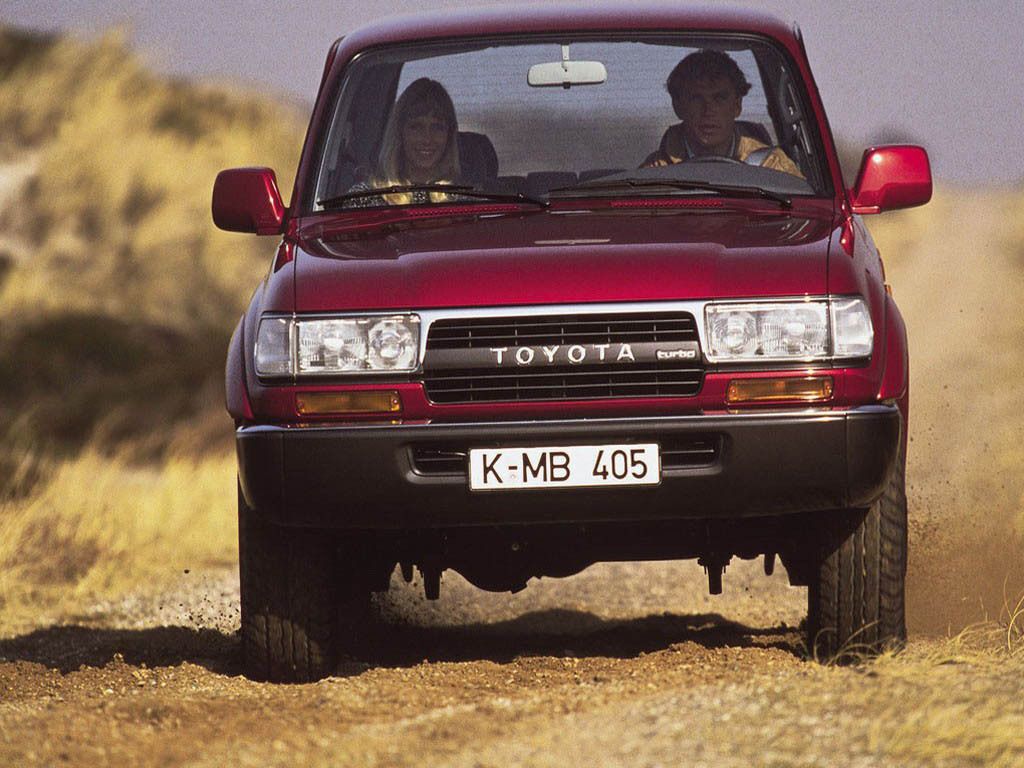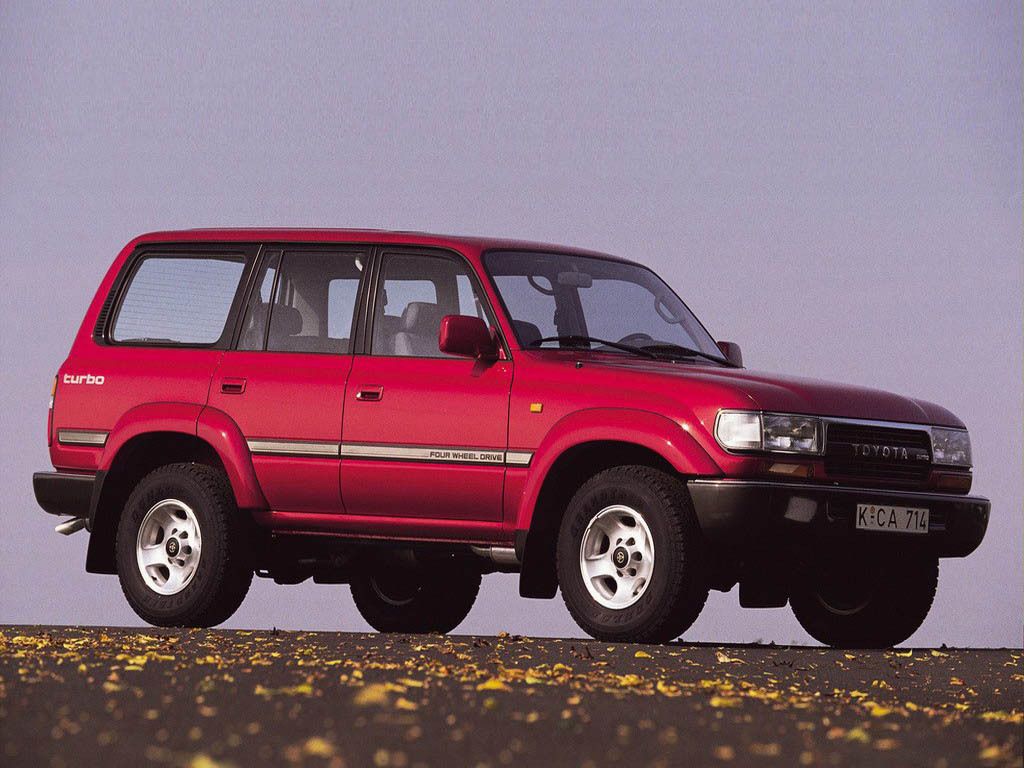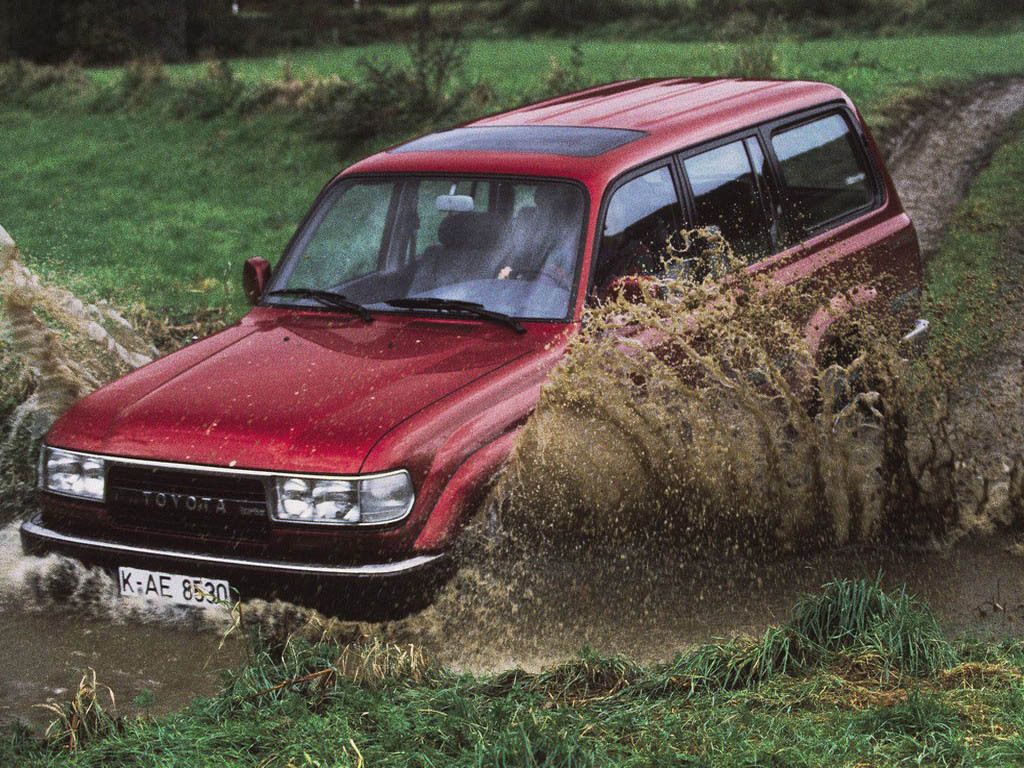By 1989, the 60 series was getting old in design. Overshadowed by much more modern designs, the 60 series looked like something that originated from the 1970s, which it actually did. The 1990s were on the horizon and such an old outdated design would just not do anymore.
1990 - 1997 Toyota Land Cruiser 80 series
- Make: Array
- Model: 1990 - 1997 Toyota Land Cruiser 80 series
- Horsepower: 0@0
- [do not use] Vehicle Model: Array
History
The 60-series was being driven more for leisure or family use as a town car than as a hardcore off-road vehicle.Over time, demand had increased for more fashionable and passenger car-like characteristics. The 60 series tried to evolve to meet these demands of a luxury sport utility vehicle, but its hardcore roots, frame and suspension could only go so far. Thus an all new design, from the ground up was needed.
The transition of the 60-series into the 80-series was more drastic than that from the 50-series to the 60-series. A number of new technologies were introduced, making the transition more revolutionary than evolutionary. The aim of the 80-series was to be at the forefront of both technology and luxury.
Toyota began the new design by immediately discarding the leaf spring suspension which has supported the full size Land Cruiser for almost 40 years. New axles would be designed as well as a new coil spring suspension front and rear. The rear axle would be similar to the axle found in the 60 series, but the front axle would be an all new design from the outer knuckles to the center differential. The new suspension was designed to be as comfortable as possible and dramatically improve handling. Off road ability was not largely sacrificed and the new design was a major success.
So successful in fact, that 9 years later, the Land Cruiser 78 series work truck, which is a hardcore off road vehicle, would be redesigned to use the same front suspension.
The exterior would undergo a complete design change. Some accents were left to remind owners that were still driving a Toyota Land Cruiser wagon, but there would be no mistaking an 80 series for a 60 series. The lines were much smoother and the overall design, far more modern.The interior was all new as well, incorporating some of the basic round dash and modern design features introduced in the new Toyota trucks and 4runners of the day. In 1994 the interior would undergo another design change in keeping with the times, but this was slight and involved mostly only the dash.
For all but one model, it came with a full-time all wheel drive 4x4 power train. In August 1996, all models took on ABS and airbags as standard equipment.In 1993, a new feature that propelled the new Land Cruiser into off road history was offered.Front and rear electric differential lockers. Although optional and somewhat rare in some markets, the new feature made up for any reduced off road capability, if any existed, and turned the 80 series into one of the most formidable stock off road vehicles in history.
The 80-series was born in the favorable environment of an economic boom. However, it did not suffer when the boom cycle ended -- the 80-series lasted for nine years, getting larger and more luxurious until it was eventually replaced in January of 1998 with the 100-series Land Cruiser. The transition to the next generation was made when the 80-series still enjoyed a high level of popularity, much the same as had happened earlier when the 60-series made way for the 80-series.
The 80-series wagon featured two types of rear gates. The higher grade model opened vertically, while the basic model opened out from the middle, like the ambulance doors of earlier model 40 series Land Cruisers. It was easier to get luggage out from the middle opening gate, but this also restricted the rear field of vision. The rear window also came with a windshield wiper, one for each window on the center-opening type.
The cargo space on the 80-series wagon could be enlarged by folding the second and third seats. The second seats folded down, while the third seats folded up along the sides of the vehicle, retaining the limited rear vision that this arrangement produced in the 60-series. On the other hand, the cargo space had a wide floor area and the body was large enough to handle bigger loads.
Because the 80-series models had a low side step and a long rear overhang, the body tended to scrape the ground in serious off-roading. In city driving, however, the large steering angle made it easier to drive. The 80 series was still an off road capable SUV, because of its solid axles and later optional electric lockers front and rear. A very minor lift, removing the side steps and slightly larger tires would easily turn the 80 series into an unstoppable off road machine.
There were few differences between the North American and overseas model 80s, with the exception that American models only got the petrol engine and an automatic transmission. Oversea models had a diesel engine and an optional second reserve petrol tank in some models as well as an available manual transmission. Some low end models also may have included part time transfer cases and manual locking hubs.
The 80 series is distinguished in North America, as being the last highly off road capable Land cruiser imported here, because all of the newer 100 series Land cruisers here are IFS and come with few off road optional accessories. In addition the 70 series Land Cruisers are not sold in North America.




